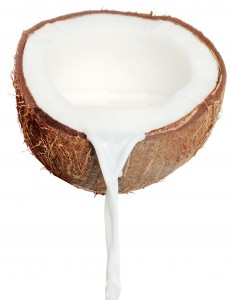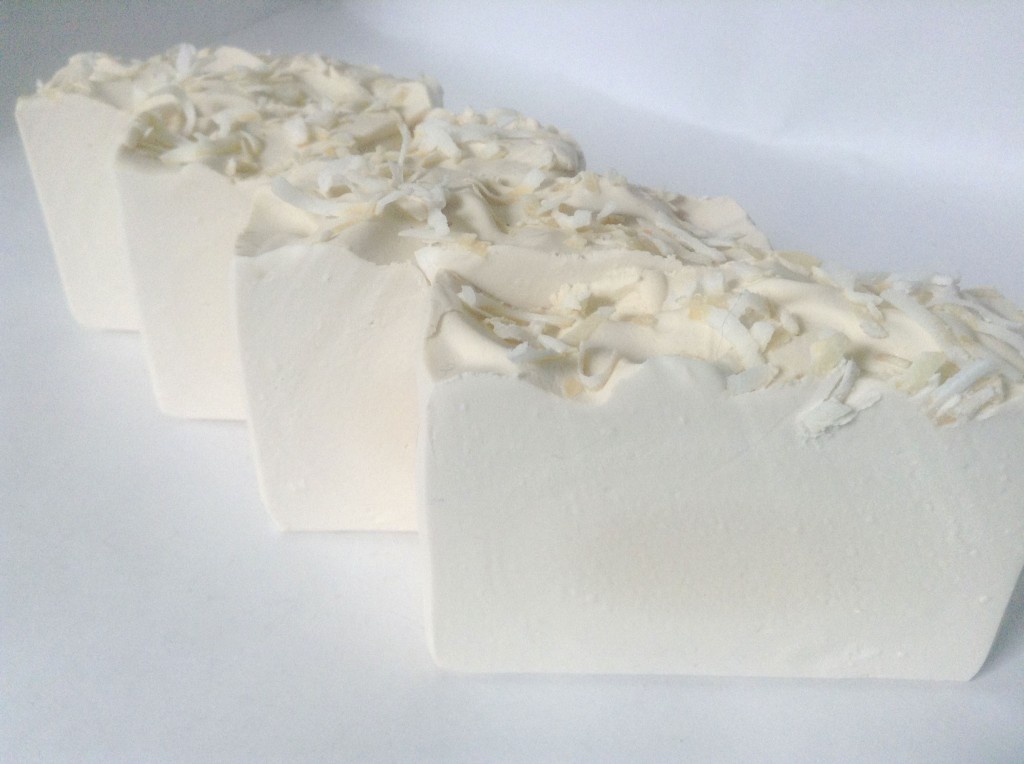Milk soaps are so much fun to make, and there are so many choices. How do you know which kind of milk to use or even how to use it? It depends on what qualities you’re looking for in your soap.
Coconut milk is possibly my favorite milk to use in soap, and it is also one of the easiest. Some of the qualities I have noticed are a tendency to increase fluffy lather with big bubbles and to lighten the color of the soap. Most milk soaps will be a bit darker than water-based soaps, but coconut milk soaps look lighter than water-based soaps to me. Coconut milk soaps feel creamier than water-based soaps as well. I use coconut milk just like I use other milks: I freeze the milk and add the lye a little bit at a time. The handiest method might be to measure it out in ice cube trays, freeze it, and then just use the amount you need. I think that coconut milk behaves a little better than other milks. It doesn’t tend to discolor, like goat milk will, and it is a lovely creamy white right up until you add it to the oils. I have noticed that like other milks, the lye will begin to saponify the fats in the coconut milk, so I tend to give it a stir every few minutes until I’m ready to add it to my oils just so that it stays smooth. However, I haven’t had any problems when I’ve added thicker, partly-saponified coconut milk to my oils. I use coconut milk in several of my soaps. I recently used it in a Creamy Coconut soap (along with real cream) that turned out very nice.
Goat Milk
Goat milk is the soap maker’s standby, and it’s fabulous in soap. It comes in three kinds: fresh, condensed, and powdered. I have used all three, and I prefer using it fresh or powdered. My experiments with condensed milk did not go as well. I think it discolors more than fresh goat milk, too. If you do use it, make sure you remember that you need to add equal parts water. Most soap makers who use it will reduce the amount of water for a recipe by half and mix that with their lye, making up the other half of their liquids with condensed goat milk.
Fresh goat milk works best when it’s frozen, just as I described with coconut milk. Add the lye to the frozen milk a little bit at a time, stirring well until the lye is dissolved each time. If you keep the temperatures low, making use of ice water baths when necessary, goat milk will discolor less, but it will still discolor. I happen to think naked goat milk is rather pretty.
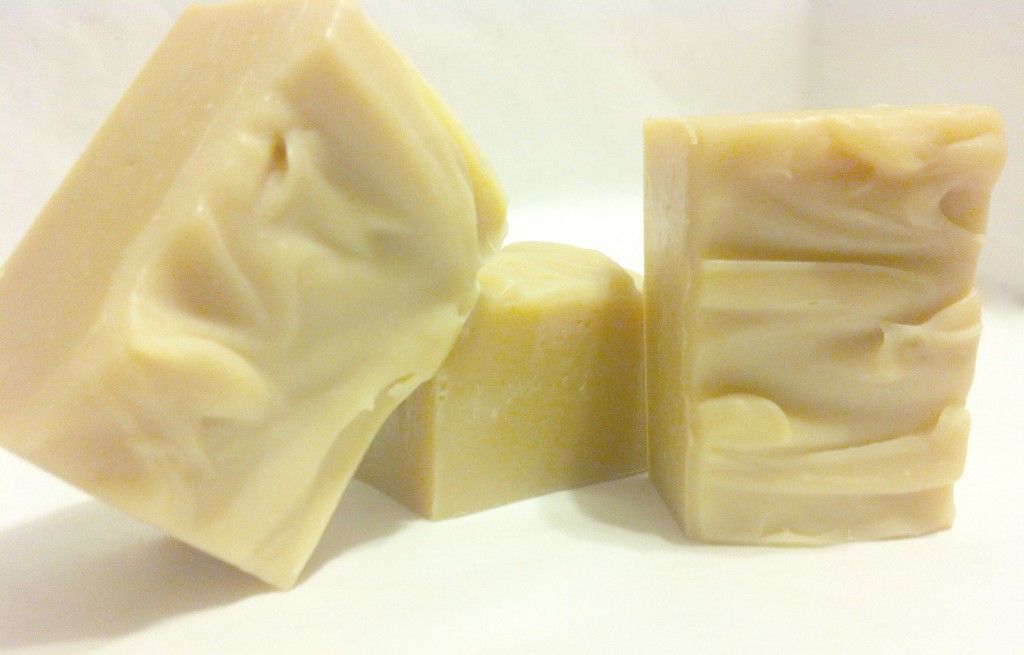 Goat milk produces a creamy, moisturizing bar of soap. It can be used raw or pasteurized. I haven’t noticed if it affects the lather much, but it does feel nice on your skin.
Goat milk produces a creamy, moisturizing bar of soap. It can be used raw or pasteurized. I haven’t noticed if it affects the lather much, but it does feel nice on your skin.
I also used powdered goat milk in some of my soaps. I add the powdered milk directly to my oils and stick blend it in to combine it until it is well incorporated, and I can’t see any clumps. I have never had any problems using powdered milk in this way, though I have heard some soap makers actually mix up the goat milk powder with water and then freeze it, just as with fresh goat milk. Some soap makers also add the milk powder at trace. Powdered goat milk still adds creaminess to the soap, but it’s much easier to use than fresh goat milk.
Cow Milk
I have used cow milk in my Chocolate Milk bars. It works fine, and I liked it, but I do feel that goat milk adds a certain extra something that cow milk doesn’t. I recommend using whole milk when using cow milk. It should also be frozen and mixed slowly with the lye. I noticed that while goat milk tends to turn an orangey shade when it is getting too hot, cow milk turns more yellow.
Almond Milk
I recently made my own almond milk and used it in a new Sweet Almond and Honey soap, and I loved it. The soap has a fluffy, bubbly lather and smooth feel. There are too many variables to say for certain the almond milk made all the difference—I also used more sweet almond oil than I typically do, and the soap has honey it in, which likely contributed to the wonderful lather.
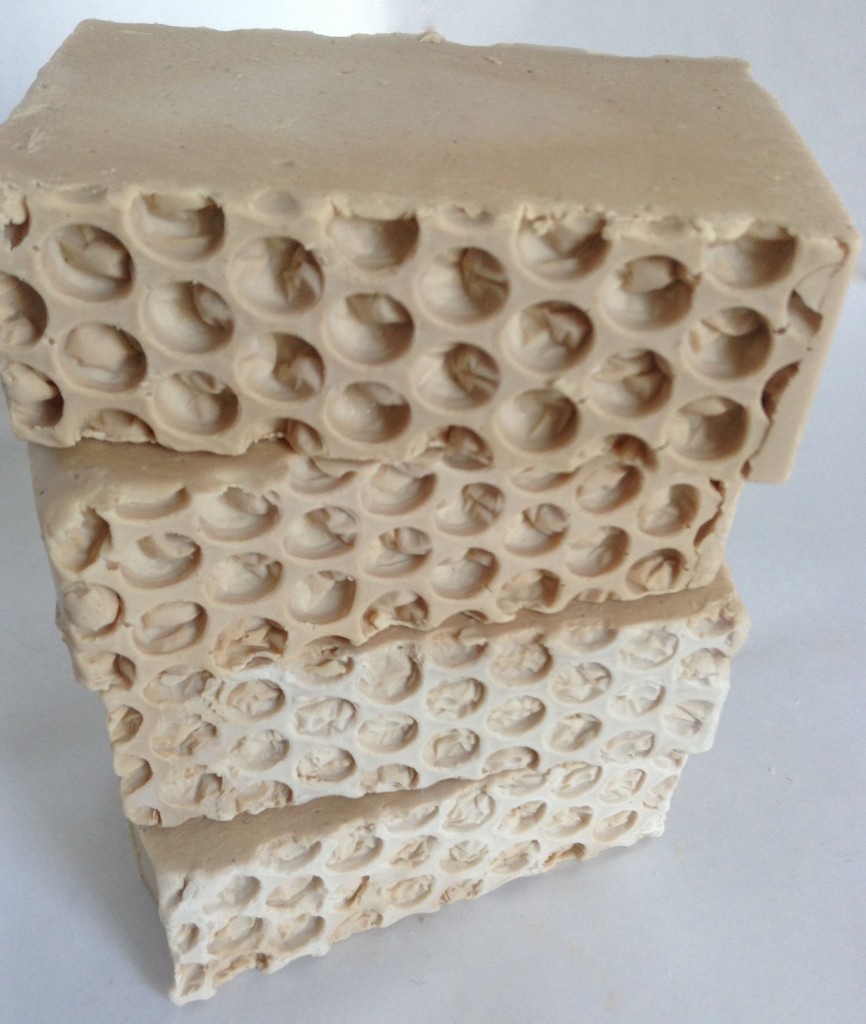 I used almond milk in the same way as I did every other milk: I froze it and added the lye slowly to the frozen almond milk. I noticed this milk, like coconut milk, stayed whiter, but it did not saponify with the lye that I could tell, and it could be that it has less fat. It was nice to work with, and I’d do it again.
I used almond milk in the same way as I did every other milk: I froze it and added the lye slowly to the frozen almond milk. I noticed this milk, like coconut milk, stayed whiter, but it did not saponify with the lye that I could tell, and it could be that it has less fat. It was nice to work with, and I’d do it again.
Yogurt
Yogurt is wonderful in soap. I use full fat plain yogurt and mix it with an equal amount of water to thin it. Then I freeze it and use it like I would any other milk in soap. It truly adds a luxurious feel to the soap. It feels smooth and creamy. I think some soap makers add yogurt to their oils either before adding the lye or at trace, but I haven’t tried that yet, though I have used yogurt powder in my oils, and it’s very nice—similar to goat milk powder.
Buttermilk
I like using buttermilk powder in soap more than fresh buttermilk, but that’s just because it’s a little easier. Buttermilk has alpha hydroxy acids that are very good for facial soaps. I use it in my Lavender Chamomile facial soap.
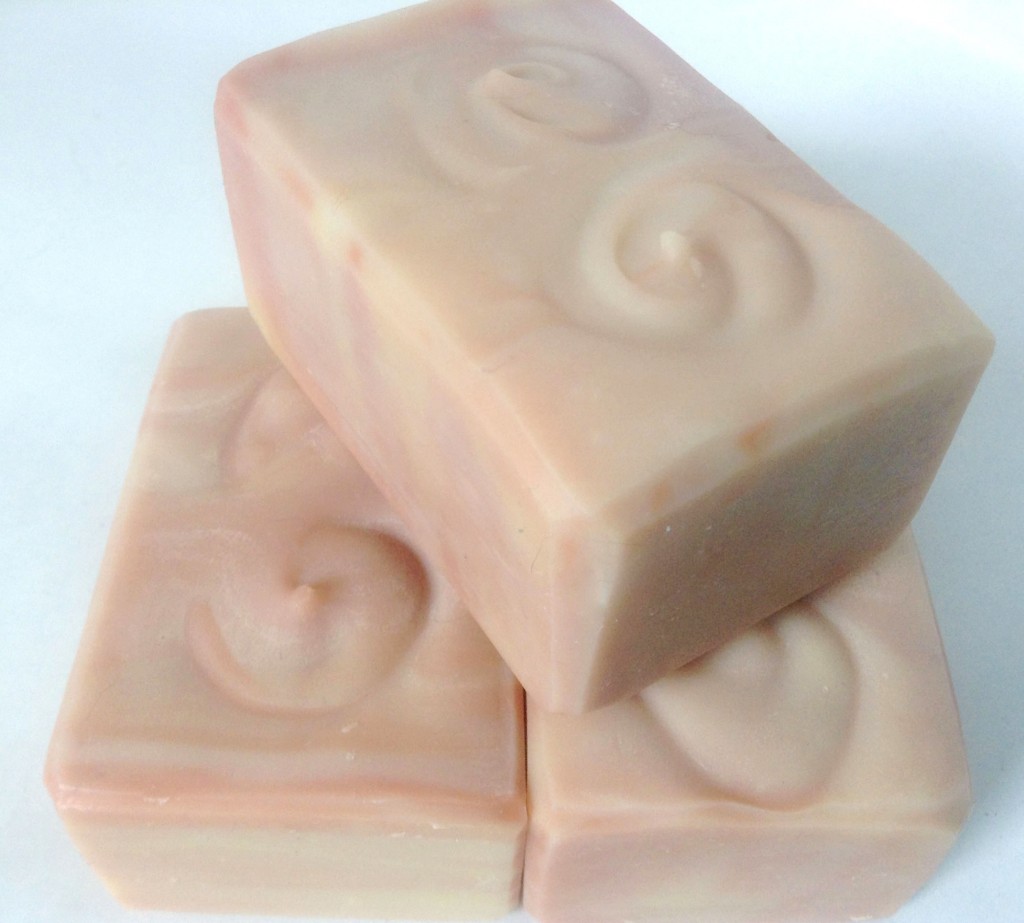 This is a very nice facial soap for a lot of reasons, including the oil combination, the chamomile-infused olive oil, and the French pink clay and lavender essential oil, but the buttermilk contributes very nice qualities to it.
This is a very nice facial soap for a lot of reasons, including the oil combination, the chamomile-infused olive oil, and the French pink clay and lavender essential oil, but the buttermilk contributes very nice qualities to it.
Cream
Cream is amazing in soap. I have not tried substituting all my water for cream, but I have tried adding cream to my oils before adding the lye, and it results in a very nice, luxurious feel.
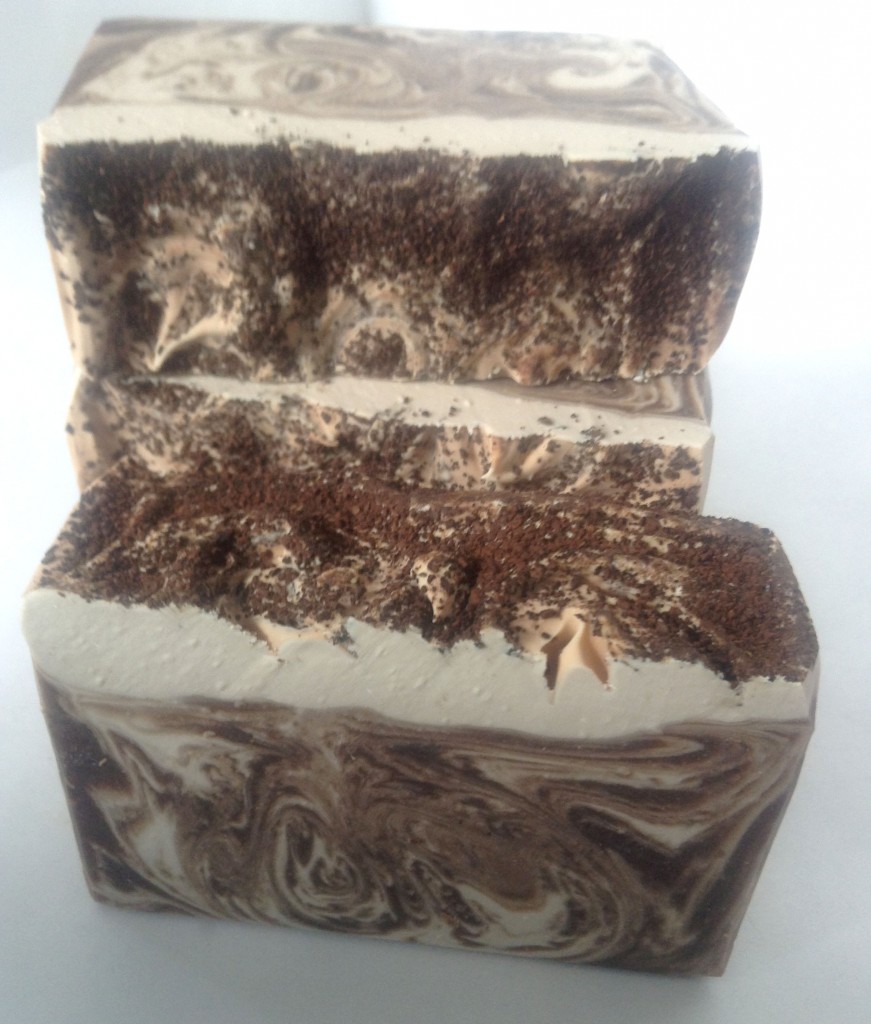 In my Coffee and Cream soap, I mixed cream with the white part you see marbled through the soap, in addition to the coffee you see in the brown part. It was a little bit of juggling, but the bar is so amazing! It smells and feels incredible.
In my Coffee and Cream soap, I mixed cream with the white part you see marbled through the soap, in addition to the coffee you see in the brown part. It was a little bit of juggling, but the bar is so amazing! It smells and feels incredible.
If you want to learn more about making soap with a variety of milks, I highly recommend Anne L. Watson’s book Milk Soapmaking.
Coconut milk photo: John Revo Puno

